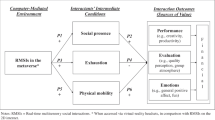Abstract
Digital media are as much an inescapable part of everyday social life as the snail's shell is to its occupant. In particular, the lives of teenagers and young adults in Western industrial countries are intimately connected to these media; the young generation in other parts of the world would like to follow suit. Digital media are not voiceless; as discursive and presentational bearers of meaning, they evoke interaction games where online actors develop subjectivisation practices. Such practices have been identified in the ‘Communicative publics in cyberspace’ research project as transformation, self-staging, border management, border transgressions and networking. These practices are not developed independently of digital media's characteristics, such as interactivity, multimedia capability, network structure, hybridity and space-forming structure. In this contribution, digital media are conceptualised as material–immaterial objects. It is assumed that the relationship between these objects and bloggers and online actors is formed interactively.





Similar content being viewed by others
Notes
Project team at the University of Klagenfurt: Christina Schachtner, Nicole Duller, Katja Osljak, Heidrun Stückler.
German distinguishes between evocative (evokativ) and evocatory (evokatorisch). Evocative (evokativ) suggests ‘containing certain ideas or notions’, whereas evocatory (evokatorisch) means ‘summoning, prompting, awakening certain notions or ideas’.
I carried out this interview as part of the ‘Computer-related thinking, acting, feeling’ study in 1992.
Visualisation is a research method applied in the ‘Communicative audiences in cyberspace’ project as a method contrasting with focused network analysis and interviews.
References
Barthes, R. (ed.) (1988) Semantik des Objekts. In: Das semiologische Abenteuer, The Semiotic Challenge (1994). Translated by R. Howard, Frankfurt/Main: Suhrkamp, University of California Press, pp. 199–209.
Baumann, Z. (2000) Liquid Modernity. Cambridge, UK: Polity Press.
Foucault, M. (1971) Die Ordnung der Dinge. Frankfurt/Main: Suhrkamp.
Foucault, M. (1993) Technologien des Selbst. In: M. Foucault, M. Rux, H.M. Luther, W.E. Paden, K.S. Rothwell, H. Gutmann and P.H. Hutton (eds.) Technologien des Selbst. Frankfurt/Main: S. Fischer, pp. 24–62.
Foucault, M. (1994) Vom klassischen Selbst zum modernen Subjekt. In: H.L. Dreyfus and R. Rabinow (eds.) Michel Foucault, Jenseits von Strukturalismus und Hermeneutik, 2nd edn. Weinheim, Germany: Beltz, pp. 281–294.
Foucault, M. (2004) Hermeneutik des Subjekts. Vorlesung am Collège de France (1981/82). Frankfurt/Main: Suhrkamp.
Giddens, A. (1995) Konsequenzen der Moderne. Frankfurt/Main: Suhrkamp.
Haferkamp, N. (2011) Authentische Selbstbilder, geschönte Fremdbilder, Nutzerbefragung: Selbstdarstellung im StudiVZ. In: C. Neuberger and V. Gehran (eds.) StudiVZ, Diffusion, Nutzung und Wirkung eines sozialen Netzwerks im Internet. Wiesbaden, Germany: VS, pp. 178–203.
Hall, St. (ed) (2004) Reflektionen über das Kodieren/Dekodieren-Modell, Ein Interview mit Stuart Hall. In: Ideologie, Identität, Repräsentation, Ausgewählte Schriften 4. Hamburg, Germany: Argument, pp. 81–107.
Hasse, C. (2013) Artefacts that talk: Mediating technologies as multistable signs and tools. Subjectivity 6 (1): 79–100.
Langer, S.K. (1965) Philosophie auf neuem Wege. Das Symbol im Denken, im Ritus und in der Kunst, Philosophy in a New Key: A Study in the Symbolism of Reason, Rite and Art, first published (1942) Frankfurt/Main: S. Fischer, Harvard University Press.
Leithäuser, Th., Löchel, E., Scherer, B. and Tietel, E. (1995) Der alltägliche Zauber einer digitalen Technik, Wirklichkeitserfahrung im Umgang mit dem Computer. Berlin, Germany: Stigma.
Lewin, K. (1982) Psychologie der Entwicklung und Erziehung, F.E. Weinert and H. Gundlach (eds.) Bern. Stuttgart: Huber. Klett.
Lorenzer, A. (1981) Das Konzil der Buchhalter. Frankfurt/Main: Fischer.
Meyer-Drawe, K. (1990) Illusionen von Autonomie. Munich, Germany: Kirchheim.
McLuhan, M. (1968) Die magischen Kanäle. Understanding Media, Understanding Media (1964) Düsseldorf, Germany: Econ, Routledge and Kegan Paul.
Schachtner, Ch. (1993) Geistmaschine. Faszination und Provokation am Computer. Frankfurt/Main: Suhrkamp.
Schachtner, Ch. (2011) Being aware of what should change. Virtual space as a critical public sphere as illustrated by Arab online platforms, unpublished manuscript.
Schulz von Thun, F. (1986) Miteinander reden: Störungen und Klärungen. Reinbek, Germany: Rororo.
Schwietring, Th. (2009) Zeigen und Verbergen. In: H. Willems (ed.) Theatralisierung der Gesellschaft. Wiesbaden, Germany: VS, pp. 250–277.
Seel, M. (2001) Inszenieren als Erscheinenlassen, Thesen über die Reichweite eines Begriffs. In: J. Früchtl and J. Zimmermann (eds.) Ästhetik der Inszenierung. Frankfurt/Main: Suhrkamp, pp. 48–62.
Turkle, Sh. (2007) Evocative Objects: Things We Think With. Cambridge, UK: The MIT Press.
Waldenfels, B. (1985) In den Netzen der Lebenswelt. Frankfurt/Main: Suhrkamp.
Winnicott, W. (1973) Vom Spiel zur Kreativität, Playing and Reality (1991), first published (1971) Stuttgart, Germany: Klett-Cotta, Tavistock/Routledge Publications.
Author information
Authors and Affiliations
Rights and permissions
About this article
Cite this article
Schachtner, C. Digital media evoking interactive games in virtual space. Subjectivity 6, 33–54 (2013). https://doi.org/10.1057/sub.2012.27
Published:
Issue Date:
DOI: https://doi.org/10.1057/sub.2012.27




